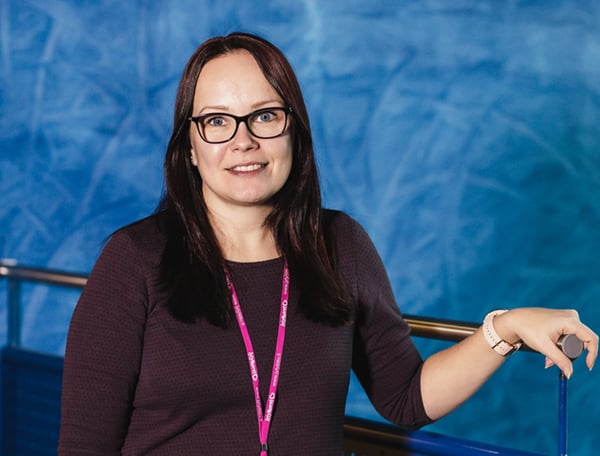Lead product manager, Tietoevry Care
The challenge
The reform of Finland's social and health care services is progressing in stages. The reform is guided by THL's instructions and regulations and the law. The changes also extend to information systems that need to interoperate. This has been confirmed by common data structures that change previous entry practices. In South Ostrobothnia, 3 municipalities and 5 associations of municipalities have decided to roll out a shared customer information system.
The solution
Lifecare Social Welfare supports customer relationship management of social welfare and enables the statutory structured entry of customer information. In the system delivery that considers the multi-organizational model, the municipalities use the same customer information system but act as their own registrars, in which case the customer information remains legally organization specific.
About the customer
The Hospital District of South Ostrobothnia is an organization owned by South Ostrobothnian municipalities that offers a wide range of special health care services. The hospital district includes 18 Finnish-speaking municipalities in South Ostrobothnia with a total population of almost 200 000.
In Southern Ostrobothnia, joint development work in social services has been carried out already for a long time. The new customer information system has been introduced in 17 municipalities. The three municipalities and five associations of municipalities have constituted 8 independent registrars.
Service process support
Supports current social care service assignments. Service processes can be built into the adaptive system to support new services.
Structured data entry
Nationally uniform customer documents and entry practices enable information retrieval, reporting, and statistics.
Lifecare Citizen Service (Omapalvelu)
A place for cooperation between the authorities and residents. In the Citizen Service, the customer can submit applications, follow the proceedings and view the decisions.

Social services renew nationwide
The aim of the social and health care reform that has been underway for several years is to ensure equal and high-quality social services throughout Finland. Digitalization plays a crucial role in providing equal services to citizens and supporting the work of professionals.
The responsibility for organizing social and health care services currently lies in about 200 municipalities or associations of municipalities, whose resources and expertise in managing services vary. If the implementation of the social reform takes place, the responsibility for organizing social and health care and rescue services will be transferred from municipalities to the regional welfare areas.
After years of joint development work in the Southern Ostrobothnia region, there was a need for social and health services to prepare for the legislative amendment of 2021, so that social care customer data is also recorded in a structured way.
“Each organization had its own old system that did not support structured entry. THL's new service classifications were not in use either, i.e., by now they have had to adopt them and translate the work done earlier into a new language”, says Elina Laakso, one of the project managers.

Elina Laakso, Special Designer, Data administration, The Hospital District of South Ostrobothnia
Comparable information is obtained from the shared system. We can invest in knowledge management in different ways and anticipate the needs of social services in the whole region better.
Elina Laakso
Special Designer, Data administration, The Hospital District of South Ostrobothnia
Document structures instruct registering
In South Ostrobothnia, the region's social services have unified the customer information system, and at the same time, they became a user of Kanta Services, i.e., began storing information in the client data archive for social welfare services.
The new customer information system follows the entry following THL's regulations and instructions. The documents of the system are based on the 7-part classification of social work service tasks. Each service task, such as services for families with children or the services for disabled, is accompanied by a corresponding range of social services. In addition, the licensing regulations ensure that the client's confidential information is visible to social care professionals only to the extent required for the job.
“Each organization works as its own registrar. They have their own production environment and also shared information that can be defined in the system. Everyone manages their users in their own environment. The licensing regulations have been agreed together, and things have been done in the same way for the system for each organization, but the restrictions are still there, i.e., they do not see each other's customer information”, says Laakso.
A nationwide unified customer service process and data entry have made it possible to join Kanta Services.
All social services in the region are consistent. They apply national regulations in the same way and use the same system. So it will help us a lot when the new social and health district is formed
Elina Laakso
Special Designer, Data administration, The Hospital District of South Ostrobothnia
On schedule despite the coronavirus pandemic
The project kick-off was held in January 2020 with almost 70 people when the future change could not yet be foreseen. The coronavirus restrictions came into force in March 2020, and the project was organized to operate through Teams, where the user training was also provided remotely.
The first deployments were made in two pilot organizations in mid-October 2020 and the remaining six organizations in early 2021. During the project, the deployment of the electronic Citizen Service was also prepared and accomplished by the organizations during the spring of 2021.
In joining the Kanta Services, the organizations are in phase 1, which means storing and retrieving data from the client data archive for social welfare services for the registrar's own use. Archiving proceeds in stages until customers see their own social service information in Citizen Service, similarly like they see their health information.
The project management went very well. We were on schedule and within the budget frame. The content that was planned was implemented.
Tomi Koivisto
Project Manager, Projicto Oy
Interested to learn more? Get to know our solutions and services for social care!





